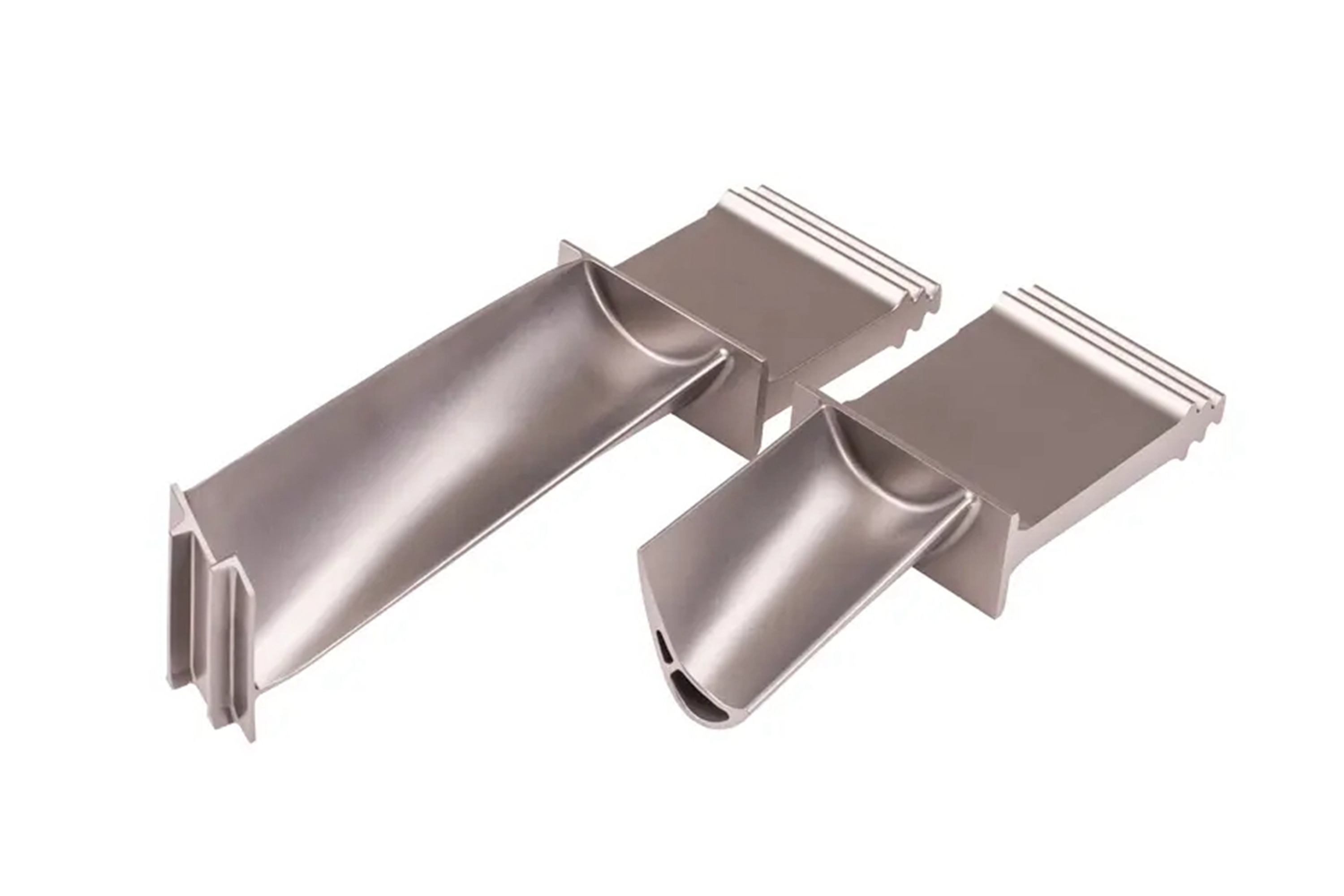CMSX-10 Single Crystal Casting Aerospace Turbine Blades Manufacturer
Introduction
CMSX-10 is a third-generation single-crystal (SX) nickel-based superalloy designed for advanced aerospace turbine blade applications, offering exceptional creep resistance, oxidation stability, and structural integrity at temperatures exceeding 1150°C. As a trusted single crystal casting manufacturer, we produce CMSX-10 turbine blades using directional solidification under high-vacuum conditions, ensuring crystal alignment, tight tolerances (±0.05 mm), and zero grain boundary defects.
Our CMSX-10 blades are engineered for aerospace engine hot sections, supporting long-term performance in high-cycle and high-thrust turbine environments.
Core Technology: Single Crystal Casting of CMSX-10
We use vacuum directional solidification in a Bridgman furnace to cast CMSX-10 turbine blades. The alloy is vacuum melted at ~1460°C and poured into ceramic molds preheated to ~1100°C. Mold withdrawal rates are precisely controlled (0.5–3 mm/min) to form single-crystal structures with [001] orientation. This eliminates grain boundaries, enhancing creep resistance, fatigue life, and oxidation performance in rotating and stator turbine parts.
Material Characteristics of CMSX-10 Alloy
CMSX-10 is a third-generation SX superalloy with high γ′ volume fraction, low diffusivity elements, and excellent phase stability under extreme heat. It is developed for first-stage turbine blades in aerospace engines. Key properties include:
Property | Value |
|---|---|
Density | 8.86 g/cm³ |
Ultimate Tensile Strength (at 1093°C) | ≥1200 MPa |
Creep Rupture Strength (1000h @ 1100°C) | ≥200 MPa |
Operating Temperature Limit | Up to 1150–1200°C |
Fatigue Strength (R=0.1, 10⁷ cycles) | ≥600 MPa |
Oxidation Resistance | Excellent |
Grain Structure | Single Crystal [001] |
CMSX-10 provides industry-leading performance in turbine sections subjected to continuous high thermal gradients and extreme rotational loads.
Case Study: Aerospace Turbine Blade Project
Project Background
A Tier-1 jet engine OEM required high-pressure turbine (HPT) blades for a new-generation commercial aircraft engine operating at turbine inlet temperatures >1150°C. CMSX-10 was selected for its proven creep strength and oxidation stability. We delivered single-crystal vacuum-cast blades with tight airfoil tolerance, internal cooling passages, and post-HIP finishing according to AMS 5412 and NADCAP standards.
Typical CMSX-10 Turbine Blade Applications
First-Stage HPT Blades (e.g., GE9X, Rolls-Royce Trent XWB): Rotating airfoils exposed to continuous 1150–1200°C gas streams, demanding maximum creep rupture and fatigue strength.
Static Nozzle Vanes: Single-crystal stationary vanes resisting stress corrosion cracking and oxidation in core flow paths.
Single-Crystal Shrouded Blades: Complex blades used in turbine tip regions requiring superior microstructural stability and erosion resistance.
Experimental Engine Core Blades: R&D engine platforms exploring next-generation turbine architectures with extreme operating cycles.
These blades are critical to thrust output, thermal efficiency, and mechanical lifespan in aerospace propulsion systems.
Manufacturing Solutions for CMSX-10 Turbine Blades
Casting Process Wax patterns are assembled and invested into ceramic shell molds. Using vacuum directional solidification, we achieve single-crystal growth in [001] orientation. Mold withdrawal is carefully managed to prevent stray grain formation and ensure complete metallurgical alignment.
Post-processing Hot Isostatic Pressing (HIP) at ~1190°C and 100 MPa ensures densification and removes any trace porosity. Post-casting heat treatments stabilize γ′ phase precipitation, improving creep resistance and thermal fatigue strength.
Post Machining CNC machining is used for root platforms, cooling slot interfaces, and shroud fits. EDM enables intricate trailing edge finishing. Deep hole drilling is applied for film cooling channels.
Surface Treatment Thermal barrier coatings (TBC) are applied using EB-PVD or APS techniques to reduce metal temperature by up to 200°C. Aluminide coatings improve oxidation resistance in uncoated regions.
Testing and Inspection All blades are inspected via X-ray NDT, CMM dimensional scanning, tensile and fatigue testing, and metallographic evaluation to confirm crystal orientation, grain size, and γ′ phase morphology.
Core Manufacturing Challenges
Maintaining strict [001] orientation during directional solidification to prevent stray grains.
Achieving internal cooling hole accuracy in thin-walled airfoil regions.
Ensuring creep and fatigue strength over 10,000+ flight cycles above 1150°C.
Results and Verification
Crystal orientation validated via Laue X-ray diffraction.
Dimensional accuracy within ±0.05 mm verified by 3D CMM scanning.
Creep rupture ≥200 MPa at 1100°C confirmed in 1000-hour endurance testing.
No γ′ phase degradation or oxidation scaling after 1000-cycle thermal exposure at 1200°C.
FAQs
What makes CMSX-10 ideal for single-crystal turbine blade manufacturing?
How do you ensure accurate crystal orientation during casting?
Can CMSX-10 blades be customized with internal cooling and shroud features?
What coating solutions are used to protect CMSX-10 in engine environments?
What testing and quality certifications support CMSX-10 aerospace compliance?

